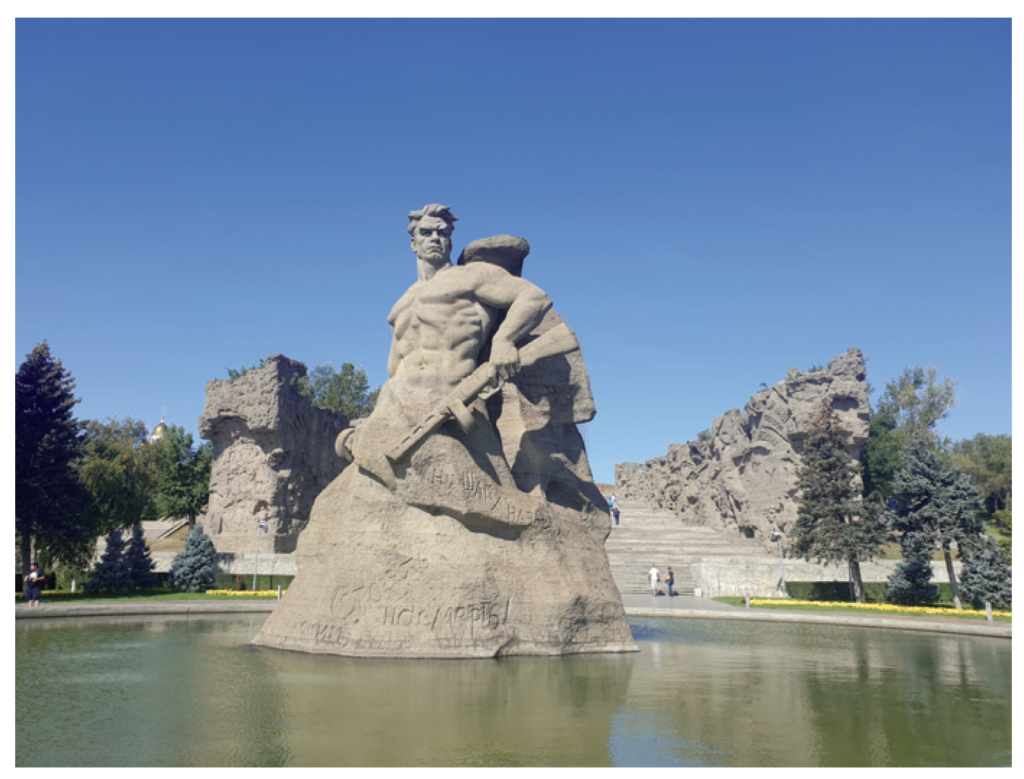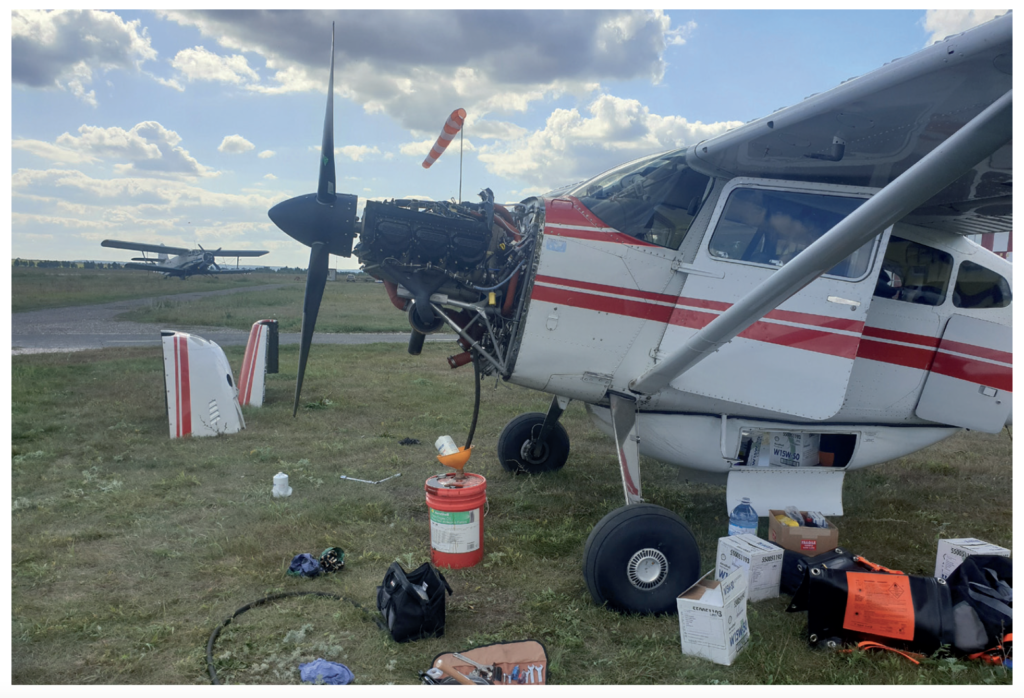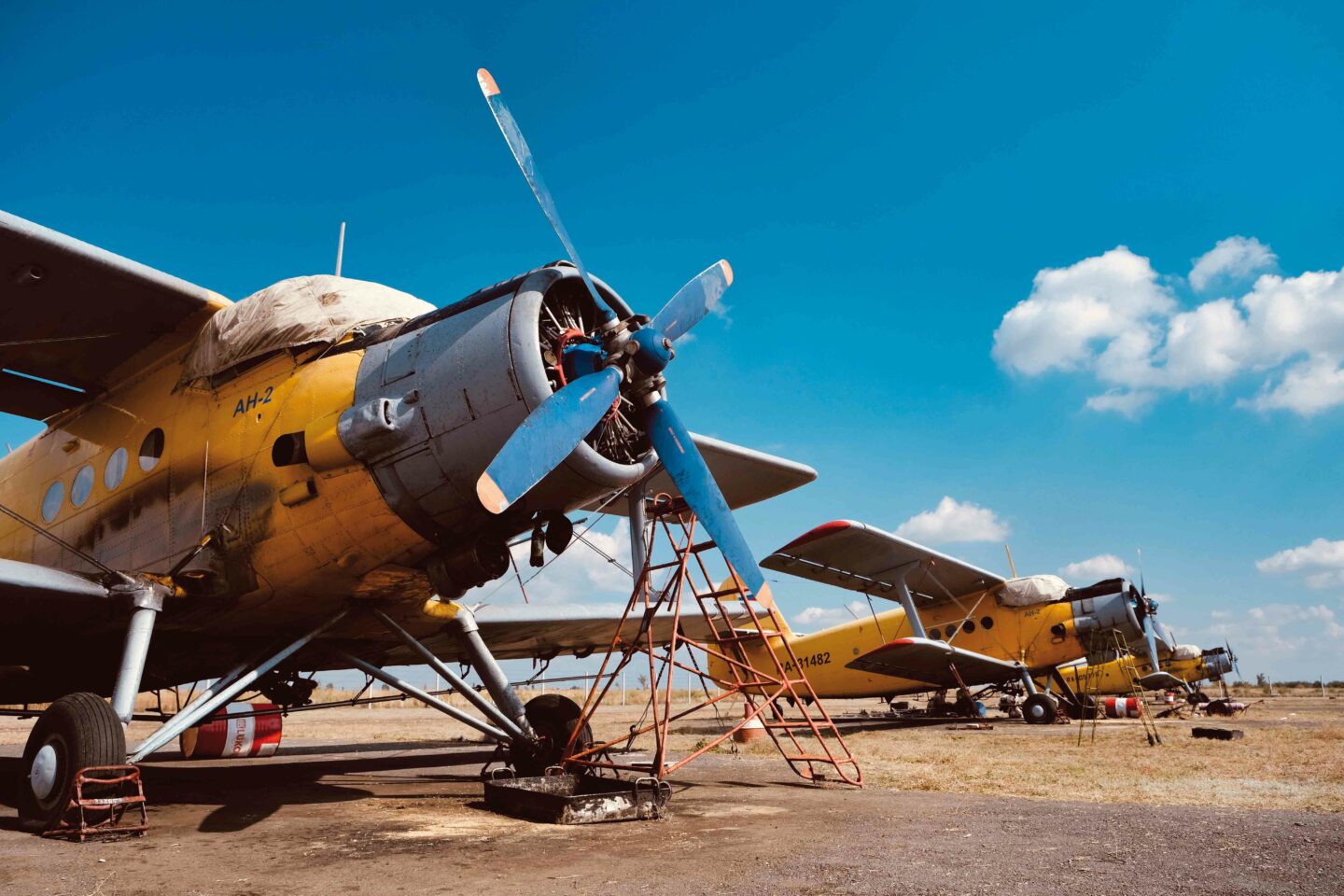By David Berger
The Vikings sailed down the Volga to the Caspian Sea. If that thought does not quicken your heart, stop reading now. It quickened ours, but various plans to travel north or south of the Caucasus to the Caspian had been rejected for geographic, political or meteorological reasons, and our customs delay in Anapa, along with the rapidly advancing season, finally put paid to all thought of a Caspian Sea outing.
Five days after we arrived, we took off from Anapa, our newly minted customs carnet burning a hole in our Folder of Important Documents, and crossed a small range of forested coastal hills, quickly reaching the vast steppe of south-west Russia, between the Sea of Azov to our left and the city of Krasnodar some way off to the right. As we headed north-east the 400 or so miles towards Volgograd, I couldn’t help gazing out the right side window into the hazy distance of the vast, arid plain stretching down to the Caspian. It was just a few hundred miles away. I felt as if I ought to be able to see it. I could certainly feel it.

How extraordinary to reflect that one or two reconnaissance units of the German army reputedly succeeded in making it all the way there in the autumn of 1942, and that we were now flying through skies which had once been thick with Yaks, Stukas, Heinkels, Sturmoviks and all the rest.
Out the left side, the vast lake formed by the dam on the River Don at Volgodonsk eventually started to take shape and we ploughed past it for some time. It is a pity that these mighty rivers have been so heavily dammed, but there is something about taming rivers which fascinates the totalitarian socialist mind the world over, often with disastrous ecological consequences. The death of the Aral Sea on the Kazakhstan-Uzbekistan border is one of the most painful of these to record.
Volograd’s main airport is west of the city, but we were keen to avoid large airports as much as possible and our destination was Beketovka airfield, a former Luftwaffe, then Soviet, military strip to the south of the city. It had been given over to agricultural and general aviation use since the collapse of the USSR, and just how agricultural became apparent as we came overhead: “That’s not actually it, is it? Those are pretty good-sized trees growing out of the runway and the potholes are enormous. It’s not in use, surely? There’s no windsock.” “No, look, there are some AN2s parked beyond those sheds to the north. They must be hangars.”
We told the local controller at the main airport that we were in the circuit at Beketovka, made a couple of low passes, identified a part of the runway which looked relatively free of trees, car-sized potholes and large lumps of disintegrating concrete, then approached around the trees growing on the eastern third and landed to the west.
Now what? There was a rough, rocky farm track leading to a gate next to the sheds, but no taxiway. Oh, that is the taxiway! We taxied gingerly along it to the gate. It was closed and padlocked. There were a couple of men busy doing jobs in the yard. No-one looked at us. We sat and waited, the engine running, wondering if we should shut down here. Eventually a burly man walked slowly up, a cigarette dangling from his mouth, unlocked the gate, opened it and walked off without looking at us. It was only the width of a farm gate. It was a farm gate, but our wings sat high enough to clear the posts on each side and we taxied through.
Noone seemed to care where we went, so we parked up and shut down just opposite a row of three blue and yellow AN2s, dirty, exhaust- and oil-stained, with spray fittings. They were crazy, magnificent, steampunk-looking contraptions and we couldn’t take our eyes off them.
We wandered over to chat to a mechanic working on one of the machines (a thousand hp and 200 l/hr – car gas, in case you’re wondering – and another dozen litres of oil – truck oil, naturally, the cheap stuff). The airfield security man came over – the man who had opened the gate for us – and beckoned us over to his caravan where he offered us a cup of tea.
This was our first experience of the Russian night watchman’s caravan, a feature of all small airfields. They are cosy, with a wood-burning stove, chintz cushions and curtains, bubbling samovar and little television tuned permanently to a Russian soap opera. More on these later. My schoolboy Russian was good enough to decipher that Vladimir would be along in about an hour and would provide us with the fuel which Evgeny had ordered on our behalf. This was a matter of some relief, as the idea that there would be fuel for us at this odd spot on the Russian steppe had seemed increasingly improbable since the moment we’d arrived overhead and tried to decide whether this was actually an airfield or not.

We were still worried about the quality of the fuel we’d be getting, but need not have been. When Vladimir arrived, we were shown to the door of a rusty shipping container, obstructed by various large pieces of equally rusty junk. These were heaved aside, the door opened and inside, praise be, were two pristine, blue and white 200 litre drums of Russian produced avgas: Сто лл Sto LL (100 Low Lead). Russian-blend avgas with high lead content, B110 and B130, seems to have been largely phased out and there are at least two producers of perfect quality 100LL in the country. We didn’t have a moment’s concern about the quality of our fuel from one end of the country to the other, but to see these two sparkling jewels full of avgas waiting just for us in this, ahem, somewhat unlikely location was a surprise and a tribute to the skills and connections of Evgeny Kabanov at www.makgas.com, our Russian aviation ‘fixer’.

And there was nothing to complain about on price either: 2€/litre west of Lake Baikal and 3€/litre east of it. The drums were manhandled out of the container by a couple of helpful mustachioed men and, after half an hour’s hand pumping, we were soon filled up. Everything seemed to have warmed up a bit after the apathy which had greeted our arrival. There were lots of smiles and some excruciating handshakes with enormous hands which were no strangers to manual labour, in contrast to my own soft, slender mitts.
By this time a nice man called Dimitri, who had some English, had rolled up. He operated some ag planes from the airfield. He was involved with the AN2s, but was mainly operating an upscaled metal Russian version of the Zenith with a large spray hopper. After he had shown us round his impressively sturdy Russian aircraft, he offered to drive us into town and we gladly accepted.
Beketovka sits on a hill at the very southern end of the city, which was the turning point of the German campaign in February 1943, when von Paulus surrendered Stalingrad and the shattered remnants of his army to the Soviets after a brutal six month siege. Dimitri drove us down through a suburb of desperate, decaying Soviet-era housing blocks – the first we had seen – to the curve of the Volga and then about forty minutes into the heart of the city to our hotel, the Старый Сталинград Stariy Stalingrad (Old Stalingrad), and one of the only older buildings to survive the battle.
The Russians do irony. Bitter irony. Irony is the national core competency and usually comes with the acrid smell of Russian tobacco. The Stariy Stalingrad Hotel is ironic Soviet kitsch of the highest proof, crammed with Young Pioneer memorabilia, next to busts of Stalin and Lenin, next to socialist realist posters of muscly men and women striding purposefully towards a golden future, all overlaid with the overpowering drapery and dull colours of the era. It is a gem and I commend it for your next stay in Stalingrad.
Volgograd, for such must we call the city these days, was completely different to Anapa, the only Russian city we could compare it to. It was poorer, more decrepit and completely Soviet-feeling from its head to its toes. Flashy Moscow money and its accompanying bling had a long way to go to reach here.
There are two attractions. The first is Волгаматушка Volga-Matushka (Mother Volga), the great river which is the lifeblood of European Russia, rising south-west of St Petersburg and draining into the Caspian Sea via a series of broad sweeps 3500km later. You can sit for hours watching the river flow by with the odd commercial barge chugging along, and we did so in the late afternoon, but it is dangerous, mind, for the imagination wanders, and here was borne the seed of a future adventure. Post-covid: picture a 30ft steel boat, a sturdy but comfortable vessel, a circumnavigation, from Germany, north into the Baltic, to St Petersburg, up the Neva river and along the Volga–Baltic Waterway to the Volga, all the way down to the Caspian Sea, south down the coast to Baku, then back up the Caspian and along the Volga to the Don, down to the Black Sea, up the Danube and then along the Rhine–Main–Danube Canal back into the heart of Germany, all to be done in one season, or perhaps two. Friends, what is a man without his dreams?
The second attraction is the Heroes of the Battle of Stalingrad monument complex on Mamayev Kurgan, dominated by the enormous The Motherland Calls statue, which was unfortunately sheathed in scaffolding for our visit. This is the Russian equivalent of Washington’s Arlington National Cemetery or London’s Cenotaph and is a place just as sacred. Forget the uncomfortable political realities for a moment – the non-aggression pact with Germany, the betrayal of Poland, the oppression and decimation of its own people over decades, and more – the Soviets lost 25 million of their own citizens in the Great Patriotic War and this monument is a moving tribute. It’s also one of the world’s prime examples of socialist realist architecture.
We caught a commuter train and spent the best part of a day wandering around the 1960s complex in the thin, early autumn sunshine. It was crowded with visitors, many of whom obviously had very personal reasons to be there, and the changing of the guard was observed in reverential silence, as it is in such places everywhere. Why the world becomes richer for butchering millions of its sons and daughters is a question which has yet to find a satisfactory answer.
We planned the next day’s trip over dinner that evening, an excellent hamburger in an avant garde hamburger joint near the river, to the accompaniment of the ubiquitous Russian technopop. We were going to make an early departure to Krasniy Yar airfield, just north of Samara, itself about 350 miles north-east of Volgograd and further up the Volga. We didn’t know it at the time, but Samara (formerly Kuybyshev) is the aerospace hub of Russia. Among many other aircraft, they built Sturmoviks here in WWII, and still build Soyuz rockets. The city has a number of aerospace institutes to educate the required engineers and that, it turns out, is why it is the home of the Seabear, and that was why we were going to Krasniy Yar.
For those who haven’t gazed wistfully for hours at pictures and videos of the Seabear in action, it is a twin Rotax powered four-seat amphibious flying boat with prodigious performance and enchanting lines. I had been corresponding with the senior engineer on the project, Valentin, who suggested we stop in on our way past, so we did.
We left early on our short flight, following the Volga north out of the city. The river presents an image so powerful, so commanding that you cannot keep your eyes off it. It thrills, and we were silent for the first twenty minutes or so, just drinking in the view as we purred along in the smooth morning air. As we did at Beketovka, we told the regional airport controller we were in the circuit at Krasniy Yar and went in and landed. It had the feel of a tiny grass airstrip in New Zealand; Mandeville, perhaps, which also has its own cottage aircraft company.

We taxied in and parked, the last in a short line of twin-engined amphibians. Valentin was there to meet us with a huge smile and, between his English and my Russian, we quickly orientated ourselves. The airfield is a private one, owned by AeroVolga, the company making the larger twin-engined amphibians – up to eight or ten seats – and powered with IO-540s. They did a polar circumnavigation with a turbine powered version in 2018. They also make the two-seat Borey amphibian, with similar performance to the SeaRey, but an all-composite construction with better load carrying capacity.
It’s an attractive machine, which may be coming to Australasia soon via South Coast Seaplanes in NSW. Seabear Aircraft and AeroVolga are in different market niches and co-operate well, and Seabear uses Krasniy Yar airfield for test and demonstration flights, though their own factory is about 20km away. AeroVolga were putting us up in their Дом Пилота Dom Pilota (Pilot House) just back from the flight line, a red and white striped building that looks like a WWII control tower and functions as a hotel for visiting pilots.
A quick huddle with Valentin and Sergei, the general manager of AeroVolga who has excellent English, and the rest of the day was planned: fuelling, lunch, a tour of the AeroVolga factory, then an oil change, followed by a flight in the Seabear with Valentin and Dimitri, the company owner and the aircraft’s designer. Food and comradeship are important to Russians and even this tiny little company has its own canteen on the airfield, with bustling, proud ladies serving tasty, wholesome dishes. We enjoyed lunch tremendously, Valentin and Sergei talking non-stop about aircraft, then toured the AeroVolga factory, a place where craftsmanship still lives and flourishes.
The weather was good, so Tom and I did the oil and filter change outside. An oil change. Outside. On the Russian steppe. I had a shiver down my spine thinking of the engineers on both sides who had done just this and so much more in terrible conditions to keep their planes running in the Great Patriotic War and here we were, doing the same. History sits ever present and heavily on your shoulder in Russia, or at least it does on mine.
By the time we had finished the oil change it was mid-afternoon and Dimitri had turned up. He is a huge man, friendly and smiling, but with no English. The Seabear is his creation and they apparently now have about forty flying all over Russia. Did we want to go for a flight and do some touch and goes on the Volga? Reader, I must inform you, we did.
This article first appeared in the Winter 2021 edition of Approach Magazine, the dedicated magazine of AOPA NZ, which is published quarterly.

